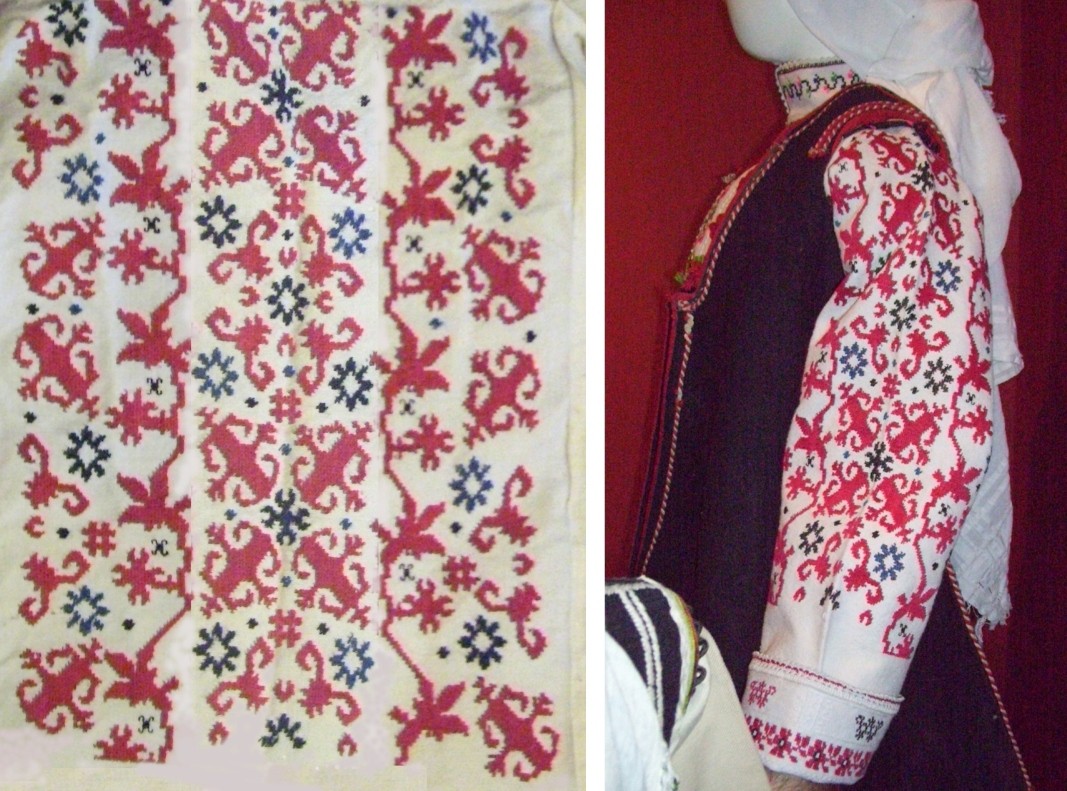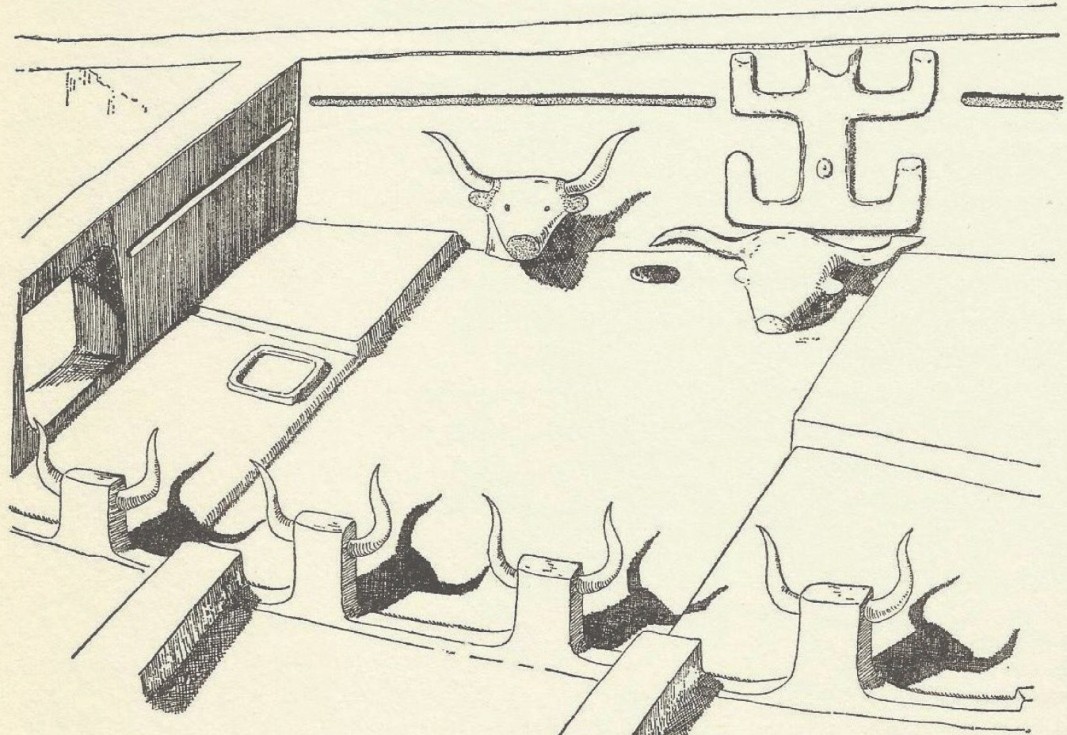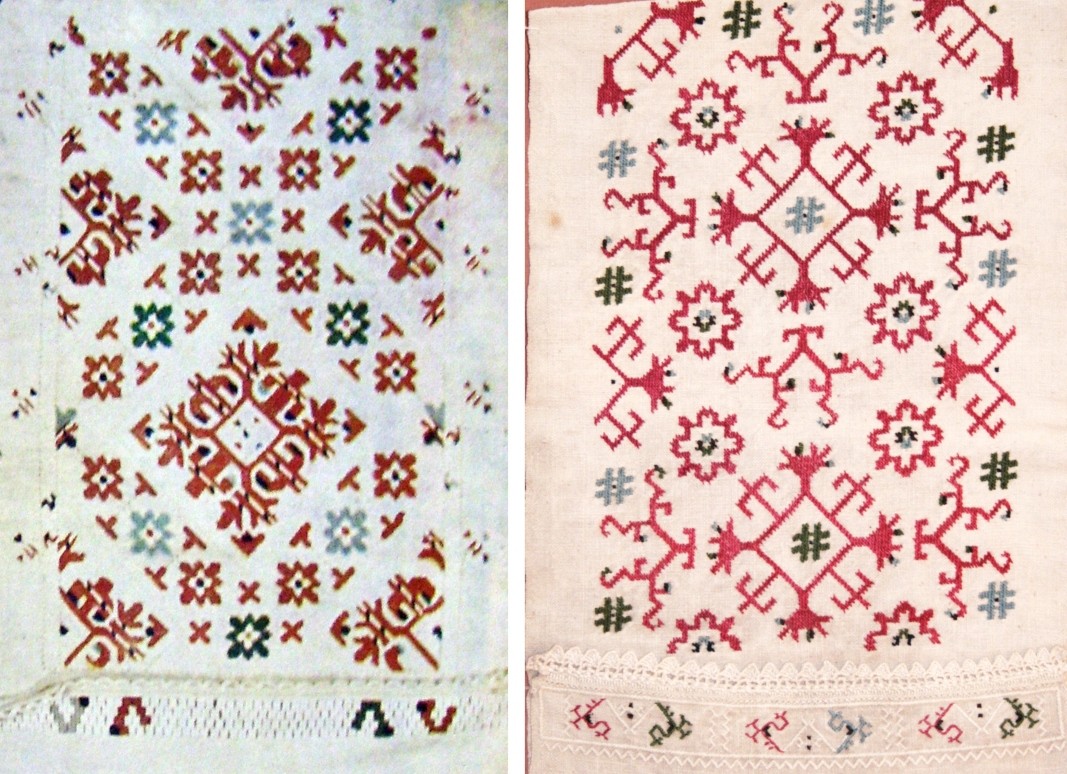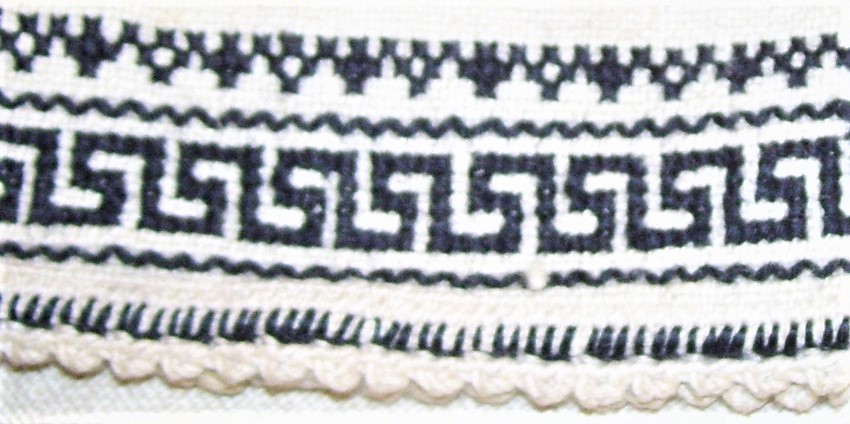"Prehistoric symbols in the svilenik (silk embroidered sleeves) from the Sofia region" is an extremely interesting study. The book is in two parts, authored by Julia Boeva. A graduate of the Pancho Vladigerov National Music, Doctor of Arts, she has been a research associate at the Research Institute of Culture at the Bulgarian Academy of Sciences for many years. After the closure of the institute she was a freelance artist with solo exhibitions and numerous participations in joint exhibitions at home and abroad. Julia is the author of five books on Neolithic wisdom carried over the millennia.
"I started with the prehistoric signs themselves," says the author. “All my life I have been interested in archeology and especially in the Neolithic era. At a relatively early age, I learned the meaning of one of the most characteristic signs of prehistoric culture, and so I began to observe and discover. In 2010, I published “The Wisdom of the Great Mother”, a monograph on the semiotic system during the Neolithic era, with a second edition in 2012. It mentions parallels with folk art phenomena, but somehow I did not pay enough attention. Suddenly, at an exhibition at the Ethnographic Museum, I saw in the embroidery motifs prehistoric symbols - the goddess in birth and horned heads.

The same combination, dating to 6 millennia BC, was discovered in Anatolia. I decided that I needed to understand the significance of this combination, which was obviously very important in order to be preserved for eight millennia."

Inspired by this discovery, she began collecting photos of embroidered sleeves from museums and the Internet. First she researched and systematized the geometric embroideries - in the svilenik there are a dozen types of crosses, identical to the prehistoric signs, including the swastikas.
"It's amazing that the embroideries have preserved the basic ideas and patterns found in prehistoric culture," Julia continues. “Rural culture originated during the Neolithic, traditions established that should have been observed. Especially in women's art and craftsmanship, which have stayed away from the changes imposed by public life. Due to historical reasons, too many old customs, costumes, etc. have been preserved in Bulgaria. And the embroideries on the clothes of the Bulgarians were mandatory - it was believed that clothing without embroidery was not sufficiently protected, they frame all the openings of traditional garments. One of the characteristic symbols is the cross sign. It is an orientation for the directions of the world, for the course of the sun, for human life, a sign of correctness, of cosmicness. The name elbetitsa appears in the Sofia region - a cruciform combination of four birds and four images of the goddess with raised hands. “

Once the name itself becomes known, it extends to all cruciform compositions in embroidery, the scholar explains. What is the meaning of the word elbetitsa - in Bulgarian and Turkish "elbetya" means - "as it is right", "as God said". The word is known to have entered Turkish from Arabic, where it means home, house, but there is another term - "bet el" - the house of God. The Bible uses "betil" or "vetil" - the place where one has received enlightenment, has connected with God. Usually these are stones in the shape of a cube, cone, pyramid - structures associated with a symmetrical structure with a cruciform base or circular symmetry. So Bulgarian elbetitsa signs have to do with the physical signification of something divine, Julia explains:
“I made an analysis of many elbetitsa signs from Sofia, it became clear that they present the origin and development of the world from one point, which increases and expands in the four directions in the form of a cosmos. At some stage in this geometric development, images of the goddess appear in the four (or eight) directions of the world and are usually of two kinds. In prehistoric culture, the goddess signified the whole world.”

According to Julia Boeva, the embroideries mostly describe the process of birth of the world and the beings in it, it describes what happens to the souls and bodies from conception to the birth of earthly life. There is also the opposite idea - dying is another kind of birth - upwards, from here to the invisible world. People in the Neolithic certainly knew what the symbols meant. Gradually, this knowledge began to disappear, but women, repeating exactly the inherited images, have preserved with them the understanding of the correspondence between the world and man. These signs are a way to consciously challenge and maintain order both in the world and in traditional rural society.
English version Rositsa Petkova
Photos: courtesy of Julia BoevaThe Bulgarian village of Turia at the southern foothill of the Balkan Range is welcoming over a thousand participants in the Masquerade Games "Old Men in Turia". This year's edition of the festival on 30 March will feature 28 mummers' groups from all..
"In a vast region in northern Bulgaria, St. Todor is somehow perceived as a demonic character... He visited gatherings of unmarried girls, which were prohibited during that period; he acquired the appearance of a young bachelor, but distinguishable by..
Thousands of cowbells of different sizes and shapes filled the streets of Yambol with chiming, jingling and ringing at the 25th International Masquerade Festival "Kukerlandia". Згдшд More than two thousand mummers - called kukeri, sourvakari,..

+359 2 9336 661
